Table Of Contents
- Before You Arrive: What Makes Osaka Different
- Getting Around: The Transportation Basics
- Where to Stay: Central, Modern, and Not Overpriced
- DAY 1: Getting Oriented Without Getting Overwhelmed
- DAY 2: Street Food, Theme Parks, and Some Nerdy Joy
- Should You Spend a Whole Day at Universal Studios?
- DAY 3: Hidden History, Local Bars & Final Views
- What I'd Do Differently Next Time
- Other Day Trips Worth Considering
- Seasonal Considerations for Your Visit
- A Note on Osaka Dialect and Culture
- Final Takeaway: Osaka Isn't Just a Food City - It's a Flow City
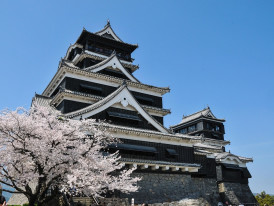
A wide-angle shot of Osaka Castle at sunrise, with cherry blossoms in bloom Image by Kohji Asakawa from Pixabay
Let me get this out of the way: a three-day visit isn't enough to see everything this city can show you.
But it might be just enough to fall for the place without the relationship getting stale.
After spending most of my life navigating between Osaka's neon-lit alleys and Melbourne's coffee shops, I've developed a knack for showing visitors how to experience this city without falling into the usual tourist traps.
This flexible and personal 72-hour itinerary isn't about checking boxes or collecting Instagram moments.
It's about experiencing the city as it actually breathes: sometimes elegant, often boisterous, and always unapologetically itself.

Local businessman enjoying street food
Before You Arrive: What Makes Osaka Different
Osaka isn't Tokyo's quirky cousin or Kyoto's rowdy neighbor, despite what other guides might tell you.
It's its own entity - a merchant city with a 1,400-year history of telling authority to shove off and prioritizing good food over almost everything else.
A short visit to this city means you'll be making choices. You'll miss some things.
That's fine. The beauty of Osaka is that it rewards the wanderer more than the checklist-follower.
Only in Osaka for 3 Days? Make Every Hour Count
A local host can help you skip the guesswork and get straight to the good stuff - whether it’s your first day or your third.
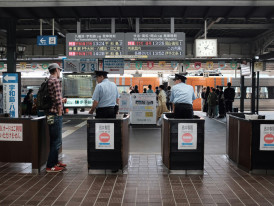
Close-up of an ICOCA card being scanned at a station gate Photo by Mak on Unsplash
Getting Around: The Transportation Basics
Before diving into your Osaka itinerary, I want to remind you that the city has an excellent public transportation system.
The subway and JR lines will get you almost everywhere, and stations have English signage. Download Google Maps before arriving - it's eerily accurate with train times here.
A prepaid ICOCA card will save you the headache of buying individual tickets.
They work on buses, trains, and even in convenience stores. Consider it your golden ticket for exploring this vibrant city with its love for street food.

Street-facing hotel sign near Namba Station. Photo by Mak on Unsplash
Where to Stay: Central, Modern, and Not Overpriced
The age-old question for first-timers planning a visit to Osaka: which area makes the most sense?
Let me break it down without the fluff.
Central Osaka vs. Osaka Bay vs. Shin-Osaka
Central Osaka (Namba/Minami) puts you in the heart of everything - restaurants, shopping, nightlife.
This is where Osaka shows its true colors, especially after dark. The subway connections are excellent, making your city exploration effortless.
Osaka Bay Area offers waterfront views and family-friendly attractions like the aquarium and Universal Studios.
It's quieter but requires more transit time to reach central areas.
Shin-Osaka is primarily a transport hub for the bullet train.
Stay here only if you're planning day trips or need to catch an early Shinkansen. Otherwise, your Osaka experience will include unnecessary commuting.
My recommendation? A moderately priced hotel in Minami.
You'll be walking distance from the food scenes that make this city worthwhile, without paying inflated tourist prices.
Another great option is HOTEL THE FLAG Shinsaibashi, which hit the sweet spot between location and price.
Clean, functional rooms with just enough design to feel intentional rather than generic. If you're splurging, consider The Ritz-Carlton for skyline views that will make your Osaka visit feel cinematic.
You can wander through the serene Nishinomaru Garden or take a leisurely stroll through Osaka Castle Park.

Interior of Osaka Station with directional signs and morning commuters Photo by Satoshi Hirayama on pexels
DAY 1: Getting Oriented Without Getting Overwhelmed
Morning: Navigational Basics and Osaka Castle
Start the first day of your Osaka itinerary journey by orienting yourself. If you're staying in Minami, take a quick subway ride to JR Osaka Station.
The station itself is a marvel of organized chaos - a microcosm of the city that will host you for the next three days.
Take ten minutes to familiarize yourself with the major exit points.
Osaka station connects several subway and JR lines, making it an essential navigational hub for your visit. If you get overwhelmed, look for the midori no madoguchi (green window) service counters, where staff usually speak basic English.
From here, take the JR Loop Line to Osakajokoen Station for Osaka Castle. Arrive before 10 AM if possible - the difference in crowd levels will be dramatic if you beat the tour buses.
Osaka Castle itself is a reconstruction (the original was repeatedly destroyed over centuries), but the grounds offer a peaceful introduction to the city's history.
Walk the perimeter moat before entering - it's free and often overlooked by visitors cramming activities into their short stay.
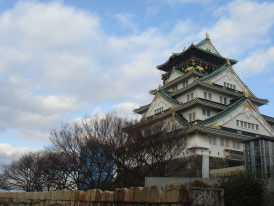
View of Osaka Castle from the moat Image by nagi from Pixabay
Osaka Castle and its surrounding area is about more than the structure itself. You can wander through the serene Nishinomaru Garden or take a leisurely stroll through Osaka Castle Park. If you're in the mood for shopping, you can also stop by Jo-Terrace Osaka, where you’ll find lovely cafes and restaurants.
Afternoon: Shinsaibashi and Dotonbori Introduction
Head back to central Osaka and make your way to Shinsaibashi Suji, a covered shopping arcade that stretches for 600 meters. This isn't just about buying trendy items - it's about observing how locals move through their city. During your 3 days in Osaka, you'll notice the distinct walking pace here; purposeful but not hurried.
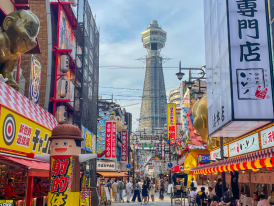
Locals walking through Shinsaibashi Suji
As afternoon slides into evening, find yourself at the northern end of Dotonbori.
This gaudy, glorious strip along the canal is Osaka's most recognizable area. You'll return here tomorrow for food, but for now, just take in the sensory overload - the giant mechanical crab, the Glico Running Man sign, the competing restaurant barkers.
Evening: Your First Taste of Osaka's Kitchen
I recommend that you avoid the overpriced restaurants directly on Dotonbori. Instead, duck into one of the side streets for a bowl of ramen.
I recommend Kinryu Ramen. Look for the dragon on the sign. It's not the absolute best ramen in Osaka, but it's reliably good and open late, perfect for travelers adjusting to the time zone.
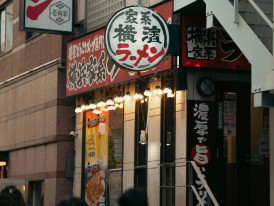
Retro ramen shop exterior at dusk Photo by Viridiana Rivera on pexels
After dinner, if jet lag hasn't knocked you out, consider a quick drink at a tachinomi (standing bar) in the area.
These miniature establishments are where locals unwind, and prices are reasonable compared to seated establishments.
Bar Nayuta near Namba Station offers sake flights that serve as an ideal nightcap for your first day in Osaka.
See More Than the Surface in Just 3 Days
See more of the city with a local by your side. No scripts, no detours, just the Osaka you want to discover.
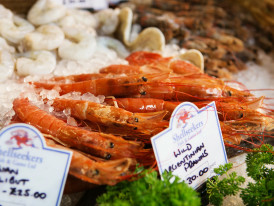
Fresh seafood display at a market stall
DAY 2: Street Food, Theme Parks, and Some Nerdy Joy
Morning: Market Exploration and Osaka's Famous Street Food
Begin your second day with a proper food adventure at Kuromon Ichiba Market. This 580-meter stretch has been feeding Osaka since 1822, and little has changed in terms of enthusiasm and quality.
Arrive hungry around 9 AM for the ideal balance of operational stalls and manageable crowds.
Yes, you absolutely should try takoyaki (octopus balls) here - they're a quintessential part of the Osaka experience.
Watch as vendors pour batter into specialized pans, add diced octopus, then deftly flip each ball until golden.
The result is crispy outside, molten inside, and entirely worth the potential tongue burn.

Octopus balls sizzling on a grill.
Don't fill up completely though. Graze your way through the market, trying kushi-katsu (fried skewers), fresh sashimi, and maybe a taiyaki (fish-shaped cake filled with sweet bean paste) for dessert.
This grazing approach will serve you well in Osaka, a city that shows itself through its food culture.
Afternoon: Universal Studios Japan - Worth Your Time?
If theme parks factor into your ideal trip to Osaka, Universal Studios Japan (USJ) delivers with distinct Japanese twists on familiar attractions.
Take the JR Yumesaki Line from Nishikujo Station to Universal City Station - the park entrance is a short walk from there.

Super Nintendo World entrance. Photo by Trang Nè on pexels
Super Nintendo World deserves the hype it receives.
Even if you haven't touched a controller since the original Mario Bros., the immersive design is impressive. The wristbands that allow interaction with the environment are worth the extra cost, especially if this kind of adventure is a priority during your 3 days in Osaka.
The Wizarding World of Harry Potter requires timed entry tickets (book ahead online).
Is it worth it? If you've seen the Hollywood or Orlando versions, probably not. If this is your first Potter experience, then yes - especially the castle walk-through, which runs differently than its American counterparts.

Wizarding World of Harry Potter with visitors in robes Photo by RDNE Stock project on pexels
These specialized tours hit spots like the Osaka Manga Museum and filming locations that inspired popular series - a niche but rewarding way to spend part of your visit.
For a more detailed discussion of manga and anime, check out our guide on anime tours in Osaka.
Evening: Osaka Bay Area After Dark
As the park closes, don't rush back to central Osaka.
The Bay Area offers a different perspective on the city, particularly after sunset.
The Tempozan Ferris Wheel lights up with seasonal patterns, providing views across the bay to the illuminated cityscape beyond.
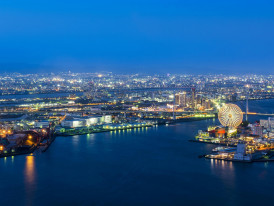
Evening view of Osaka Bay Ferris wheel Photo by Pixabay on pexels
For dinner, avoid the overpriced restaurants directly attached to the attractions.
Walk 10 minutes toward Osakako Station to find local izakayas (Japanese pubs) where shipyard and aquarium workers eat. Prices drop by 30-40% compared to the tourist zones.
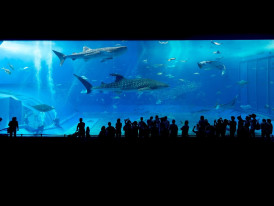
Osaka Aquarium's whale shark tank. Image by Jordy Meow from Pixabay
Should You Spend a Whole Day at Universal Studios?
This depends entirely on your priorities. If you're a theme park enthusiast or traveling with children, Universal Studios Japan can easily consume an entire day.
The park typically runs from 8:30 AM to 9:00 PM, with extended hours during peak seasons.
Realistically, here's what you're looking at:
- Wait times average 60-90 minutes for popular attractions
- Japanese visitors outnumber international tourists roughly 70/30
- Food prices are 30% higher than equivalent meals outside
If you're trying to maximize your 3 days in Osaka beyond fun parks, consider the combination ticket that includes the Osaka Aquarium Kaiyukan.
The aquarium houses a whale shark in its massive central tank.
The Tempozan Ferris Wheel next door provides city views at a fraction of the cost of observation decks.
This alternative approach gives you the Bay Area experience while leaving half your day free for exploring other aspects of the city.
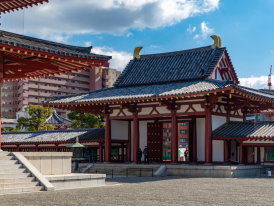
Shitenno-ji entrance with locals
DAY 3: Hidden History, Local Bars & Final Views
Morning: Spiritual Quiet at Shitenno-ji
Start your final day with something completely different. Shitenno-ji Temple dates back to 593 CE, making it Japan's oldest officially administered temple.
Unlike Kyoto's more famous complexes, Shitenno-ji receives manageable visitor numbers even during peak season.
Take the Tanimachi subway line to Shitennoji-mae Yuhigaoka Station. The temple opens at 8:30 AM, and arriving early guarantees the most contemplative experience.
The five-story pagoda and main hall have been rebuilt numerous times while maintaining their original design - a fitting metaphor for Osaka itself.
Midday: Urban Heights at Umeda Sky Building
Yes, the Umeda Sky Building is firmly on the tourist path.
But during your visit, some attractions earn their popularity. The "Floating Garden Observatory" connecting the two 40-story towers offers 360-degree views that contextualize everything you've experienced.
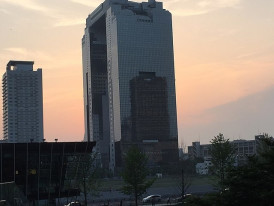
Umeda Sky Building sunset view photo by Yasuo Ogiuchi on Creative Commons Attribution-Share Alike 3.0
Take the Midosuji Line to Umeda Station and follow the signs. The elevator ride and escalator crossing between towers might trigger vertigo, but the perspective is worth it. On clear days, you can see all the way to Awaji Island.
Arrive around noon to avoid both the corporate lunch crowd and the sunset photographers.
The observation deck runs a small café where you can have a coffee while absorbing the sprawling urban landscape that has hosted your visit in Osaka.
Afternoon: Retro Vibes in Shinsekai
For a complete change of atmosphere, take the Sakaisuji Line to Ebisucho Station and enter into Shinsekai - a neighborhood that feels frozen in the Showa era (1926-1989).
This area was developed before World War II, abandoned, then revived without the economic miracle that transformed other parts of the city.
Taste Osaka’s Stories, One Bite at a Time
Share a table with a local who’ll take you beyond the menu and into the heart of Ura Namba’s food scene.
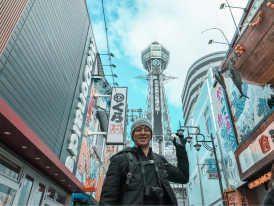
Tsutenkaku Tower.
The Tsutenkaku Tower sits at Shinsekai's center, a retro-futuristic structure that locals view with amused affection.
The observation deck is average, but the late afternoon sun filtering through its distinctive shape creates excellent photo opportunities during your 3 days in Osaka.
Shinsekai specializes in kushikatsu - deep-fried skewers of meat, seafood, and vegetables served with a communal dipping sauce.
The rule against "double-dipping" is strictly enforced, making for an amusing cultural lesson you'll always remember.
Try Daruma for the most colorful experience, recognizable by the angry-looking founder's face on their sign.
Evening: Local Revelry in Minami
For your final night, return to the Minami district but skip the main Dotonbori drag.
Instead, explore Hozenji Yokocho - a narrow alley near Hozenji Temple lined with traditional establishments. The stone-paved pedestrian path feels like stepping back decades, despite being minutes from neon-drenched boulevards.

Narrow stone-paved alley with traditional lanterns Image by DANG HUYNH SON from Pixabay
Find a seat at a local tachinomi if you want drinks with character.
These standing bars might seem intimidating during your stay, but a smile and basic courtesy will overcome the language barrier.
Order highballs (whisky with soda) if you're uncertain - they're universally well-prepared in Osaka.
For dinner, let your appetite be your guide.
My personal favorite is Mizuno, an okonomiyaki restaurant that's been operating since 1945. Their signature "yamaimo-yaki" uses mountain yam in the batter for extra fluffiness.
It's popular even among locals, a rare achievement for an establishment so close to tourist areas.

Okonomiyaki being cooked on a hot plate
For dinner, let your appetite be your guide.
My personal favorite is Mizuno, an okonomiyaki restaurant that's been operating since 1945. Their signature "yamaimo-yaki" uses mountain yam in the batter for extra fluffiness.
It's popular even among locals, a rare achievement for an establishment so close to tourist areas.
End your experience at the Ebisubashi Bridge - the unofficial center of the city's night energy. The point where Dotonbori Canal passes under the pedestrian crossing creates a reflection of neon lights that's more impressive than any single attraction.
It's crowded but worth experiencing, especially as the capstone to your 3 days in Osaka.
More than 26,274 5-star reviews and counting
26,274+ 5-Star Reviews and Counting
Trusted and recommended by travelers worldwide.
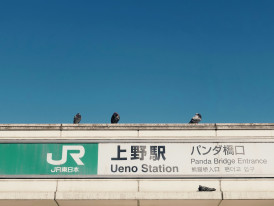
JR line signage Photo by Nakaharu Line on Unsplash
What I'd Do Differently Next Time
After guiding countless friends through their Osaka trips, I've refined what works and what doesn't.
Time-Saving Travel Tips
The JR lines and private railways can be confusing during your visit. Consider a 1-day or 2-day Osaka Amazing Pass if your itinerary includes several attractions rather than individual tickets.
The math usually works out if you're visiting more than three paid sites daily.
If you're arriving at Kansai International Airport, the direct train to Namba Station (Nankai Line) is faster and cheaper than the JR options, contrary to what most guides suggest.
This small optimization adds extra exploration time to your visit.
Money-Saving Strategies
Food costs can add up quickly, but convenience stores (konbini) offer surprisingly good quality for breakfast or lunch.
Lawson's egg sandwiches and 7-Eleven's onigiri (rice balls) would qualify as legitimate café food in most western countries.
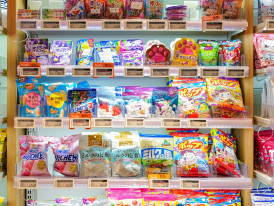
Selection of convenience store meals and snacks Photo by Declan Sun on Unsplash
Department store food halls (depachika) mark down their prepared foods by 30-50% after 7 PM.
This is an insider move that can significantly reduce costs during your stay while still delivering delicious flavors.
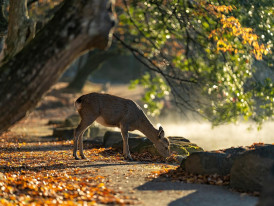
Deer in peaceful setting.
Other Day Trips Worth Considering
If you want to explore beyond the city limits, there are several worthwhile destinations accessible within an hour:
Nara: Ancient Capital and Deer Park
Just 45 minutes by train, Nara offers a completely different atmosphere with its famous deer park, where hundreds of free-roaming deer bow for crackers.
Todai-ji Temple houses Japan's largest bronze Buddha statue in the world's largest wooden building - an engineering marvel that dates back to 752 CE.
A half-day is enough for the highlights, but history buffs could easily spend longer exploring the multiple UNESCO World Heritage sites concentrated in this compact former capital.
Consider taking the earliest train possible to bypass tour groups.
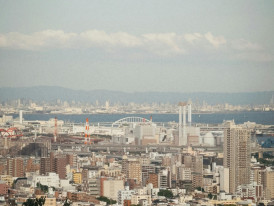
Kobe harbor view from Nunobiki Herb Garden Photo by S M T on pexels
Kobe: Harbor Views and Legendary Beef
Just 30 minutes away by rapid train, Kobe offers a completely different feel with its international harbor, hillside European-style mansions, and of course, the world-famous Kobe beef.
The city's compact size makes it perfect for a day trip.
Take the Shin-Kobe Ropeway up Mt. Rokko for spectacular views, then descend to explore the atmospheric Kitano district with its preserved foreign merchants' houses.
End your day with a small portion of Kobe beef - even a lunch set is more affordable than dinner while still offering the melt-in-your-mouth experience that makes this beef legendary.
Make Every Minute in Osaka Count
With a local host by your side, even a short stay can feel immersive. Explore Osaka’s quirks, flavors, and after-dark energy your way.
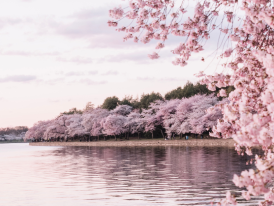
Cherry blossom view Okawa River
Seasonal Considerations for Your Visit
Cherry Blossom Season (Late March to Early April)
If you're visiting during sakura season, add Kema Sakuranomiya Park to your itinerary. This riverside park features nearly 5,000 cherry trees lining the Okawa River for almost 5 kilometers.
Unlike Kyoto's more famous spots, you can still find relatively peaceful viewing spots even during peak bloom.
The Japan Meteorological Corporation releases cherry blossom forecasts months in advance, but these are estimates - nature follows its own schedule. Book accommodations early if visiting during this period, as prices can double and availability becomes scarce.
Summer Festival Season (July-August)
Summer in Osaka brings the spectacular Tenjin Matsuri, one of Japan's largest festivals.
Dating back over 1,000 years, the July 24-25 celebration features a river procession of boats, fireworks, and thousands of participants in traditional Heian-period costumes.
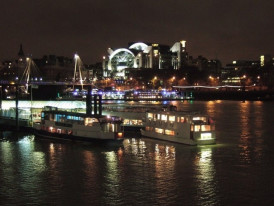
Festival boats illuminated at night on river. photo by Derek Harper on Creative Commons Attribution-Share Alike 2.0
August brings the Yodogawa Fireworks Festival, where approximately 4,000 fireworks illuminate the night sky.
Locals stake out viewing spots hours in advance with tarps - follow their lead to secure a good position.
Bring a portable fan and cold drinks, as summer humidity can be challenging.
A Note on Osaka Dialect and Culture
Osaka's distinct identity extends to its language. The Kansai dialect spoken here differs noticeably from standard Japanese, with unique expressions that reflect the region's merchant history and straightforward character.
Even if you don't understand Japanese, you might notice the more melodic, rhythmic quality compared to Tokyo's flatter intonation.
Osaka people are known for being more outwardly friendly than their Tokyo counterparts - spontaneous conversations with shopkeepers or fellow diners are common.
This openness makes the city particularly welcoming for solo travelers who might feel isolated in more reserved parts of Japan.

Osaka city in sunset Image by djedj from Pixabay
Final Takeaway: Osaka Isn't Just a Food City - It's a Flow City
After three days in Osaka, what sticks with you isn't just individual experiences but how the city moves. There's a rhythm here that differs from Tokyo's businesslike efficiency or Kyoto's deliberate preservation.
Osaka flows between traditional and ultramodern without self-consciousness - pragmatic about progress while holding space for its mercantile roots.
For first-time visitors to Japan, a short Osaka trip provides an ideal introduction.
The city's direct approach and unpretentious character make it navigable even when cultural differences seem overwhelming.
You can experience real Japanese culture without the pressure to appreciate it in any prescribed way.
What makes this three-day itinerary work so well is the city's inherent flexibility. You can explore on a mid-range budget without feeling like you're missing the "real" experience.
The most memorable moments often come from unplanned encounters in ordinary settings rather than tourist spectacles.
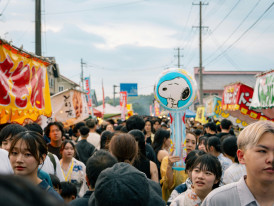
Locals at a small outdoor festival Photo by Aditiya Nugroho on Unsplash
If you're looking to explore beyond my suggestions, consider booking some Osaka experiences with residents who can show you their personal version of the city.
Sometimes the most 'real' way to experience a place is through someone else's relationship with it.
Three days won't make you an expert, but it might make you a convert.
The city doesn't try to impress you - it's too busy being itself. And that genuine quality, more than any single attraction, is what creates the unexpectedly strong attachment that brings people back.
Whether you want to taste all the food delights, marvel at Osaka Castle, check out one of the awesome Osaka museums, or just enjoy the city center, you won't regret coming over and indulging in everything this amazing city has to offer!
Make Your 3 Days in Osaka Unforgettable
SEE OSAKA EXPERIENCESA Local Host Makes 3 Days Feel Like a Week Well Spent
Make the most of your time in Osaka with an experience tailored to your interests - no tourist trail in sight.
Want to Make the Most of 3 Days in Osaka?
Chat with a local host who’ll help you shape the perfect trip with no scripts, just honest insight.









